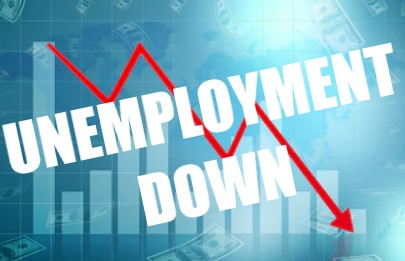
SPRINGFIELD – The Illinois Department of Employment Security (IDES) announced today that the unemployment rate fell -0.5 percentage points to 11.0 percent, while nonfarm payrolls added +66,000 jobs in August, based on preliminary data provided by the U.S. Bureau of Labor Statistics (BLS) and released by IDES. The July monthly change in payrolls was revised upward from the preliminary report, from +93,200 to +105,000 jobs. The July unemployment rate was revised upward from the preliminary report, from 11.3 percent to 11.5 percent.
The August payroll jobs estimate and unemployment rate reflects activity for the week including the 12th. The BLS has published FAQs for the August payroll jobs and the unemployment rate.
The state’s unemployment rate was +2.6 percentage points higher than the national unemployment rate reported for August, which was 8.4 percent, down -1.8 percentage points from the previous month. The Illinois unemployment rate was up +7.2 percentage points from a year ago when it was 3.8 percent.
The number of unemployed workers declined from the prior month, a -2.9 percent decrease to 695,000 but was up +182.6 percent over the same month for the prior year. The labor force was up +1.6 percent over-the-month and down -1.5 percent over-the-year. Confidence in the Illinois economy has grown in recent months. From January 2020 to April 2020, the Illinois labor force declined -4.6% (-294,000 individuals) and, yet, from April 2020 to August 2020, the labor force has rebounded 3.6% (nearly 224,000 individuals).
In August, the three industry sectors with the largest over-the-month gains in employment were: Leisure and Hospitality (+16,400), Government (+15,900), and Professional and Business Services (+9,900). Only one industry sector reported a payroll decline: Information (-1,400).
“As the unemployment rate steadily declines and confidence in the economy increases as more people return to the workforce, IDES remains committed to assisting those individuals still impacted by this pandemic and in need of unemployment services,” said Acting Director Kristin Richards. “In addition to providing unemployment benefits, the Department is also prepared to assist individuals with job training and matching workers with hiring employers to help as many Illinoisans as possible return to work to provide for their families and basic needs.”
“While it’s encouraging to see a continued month over month decline in Illinois’ unemployment rate, there remains much to do to bring more Illinoisans safely back to work and to rebuild our economy,” said Erin Guthrie, Director of the Department of Commerce and Economic Opportunity (DCEO). “That’s why the Pritzker administration continues to prioritize critical investments that support our hardest hit communities and small businesses, like our recent $220 million expansion of the Business Interruption Grants (BIG) program, and hundreds of millions in additional ongoing assistance for our communities and our community employers. These investments will help stabilize our small businesses, enable our economy to continue to safely reopen, return more Illinoisans to work, and provide our economy the boost it needs.”
Compared to a year ago, nonfarm payroll employment decreased by -428,700 jobs, with losses across all major industries. The industry groups with the largest jobs decreases were: Leisure and Hospitality (-143,700), Professional and Business Services (-72,500) and Trade, Transportation, and Utilities (-53,400). Illinois nonfarm payrolls were down -7.0 percent over-the-year as compared to the nation’s -6.8 percent over-the-year decline in August.
The unemployment rate identifies those individuals who are out of work and seeking employment. An individual who exhausts or is ineligible for benefits is still reflected in the unemployment rate if they actively seek work.
In May, Governor Pritzker launched Get Hired Illinois, a new one-stop-shop website to help connect job seekers with hiring employers in real time. The site features virtual job fairs, no-cost virtual training, and includes Illinois Job Link (IJL), the state’s largest job search engine, which recently showed 75,453 posted resumes with 77,139 available jobs.
Seasonally Adjusted Unemployment Rates
Illinois Seasonally Adjusted Nonfarm Jobs – by Major Industry
• 2015-2019 seasonally adjusted labor force data for Illinois, and all other states, have been revised as required by the U.S. Bureau of Labor Statistics (BLS). The monthly historical revisions to state labor force estimates reflect new national benchmark controls, state working-age population controls, seasonal factors, as well as updated total nonfarm jobs and unemployment benefits claims inputs. Illinois labor force data were also smoothed to eliminate large monthly changes as a result of volatility in the monthly Census Population Survey (CPS) and national benchmarking. For these reasons, the comments and tables citing unemployment rates in previous news releases/materials may no longer be valid.
• Monthly seasonally adjusted unemployment rates for Illinois and the Chicago-Naperville-Arlington Heights Metropolitan Division are available here.
• Monthly 2011-2019 seasonally adjusted nonfarm payroll employment data for Illinois have been revised. To control for potential survey error, the estimates are benchmarked annually to universal counts derived primarily from unemployment insurance tax reports.
• Not seasonally adjusted jobs data with industry detail are available here. “Other Services” include activities in three broad categories: personal and laundry; repair and maintenance; and religious, grant making, civic and professional organizations. Seasonally adjusted data for subsectors within industries are not available.
About the Department of Employment Security
The Illinois Department of Employment Security (IDES) provides vital employment services to Illinois workers, employers, and job seekers with resources including Job Fairs and Illinois Job Link, analyzes and disseminates actionable Labor Market Information, and administers the Unemployment Insurance Program. To see the full range of services provided by IDES, and for the latest news concerning the department, visit IDES.Illinois.gov.













